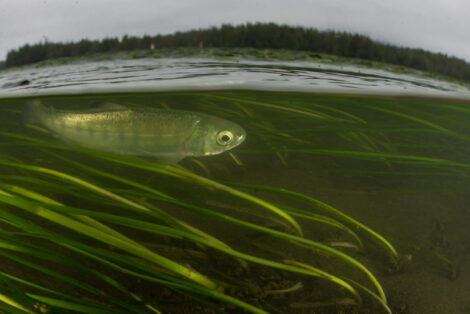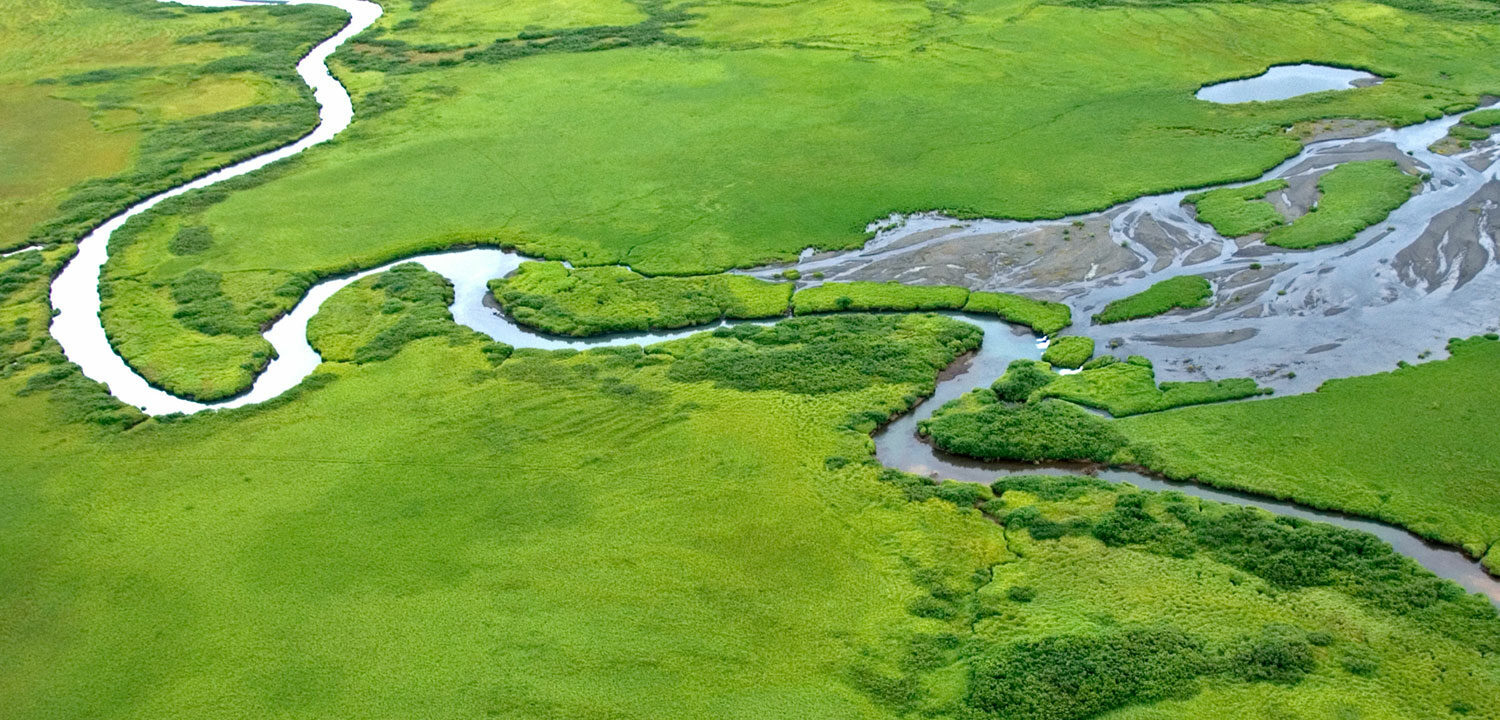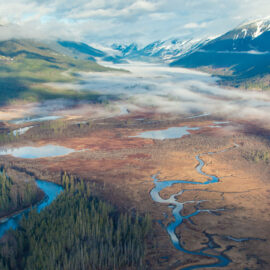Two leading scientists continue to undermine the “no harm” claim by industry in the Skeena River estuary.
The Canadian government is coming under new scrutiny for its approval of Petronas’ Pacific Northwest liquefied natural gas (LNG) export facility at the mouth of the Skeena River, as two leading Canadian scientists press federal officials on the damning scientific evidence they overlooked.
The $11.4 billion facility, which would be built over the most important juvenile salmon habitat in the Skeena at Flora Bank, received its approval from the federal environmental assessment agency in September.
Sedimentologist Patrick McLaren, who was hired by the indigenous Lax Kw’alaams Band to assess the impacts of the LNG facility’s 500 pilings on the relict sand formations at Flora Bank, now claims that industry scientists worked around his peer-reviewed findings that the bank could be totally lost because of the development. Flora Bank and its eelgrass beds are overwhelmingly preferred by salmon as they head out to sea, compared to other juvenile habitats in the Skeena estuary.
From the Canadian Press:
Petronas-hired modellers initially dismissed his findings. But after McLaren published them in the international Journal of Coastal Research last May, the Canadian Environmental Assessment Agency asked the project proponent to do more modelling.
Eventually, the company produced a model they said agreed with his sediment analysis — while sticking to the original “no harm” conclusion.
McLaren says the company ignored its own current measurements taken on site and claimed currents are much lower than those McLaren actually measured. He also says the company changed the verifiable physics of how much current is required to move sand grains of the precise size found on Flora Bank and ignored observable sand waves there — which require currents well above even the company’s artificially high threshold for sand movement.
McLaren, who once worked for the federal Geological Survey of Canada before starting his own practice, says that the government might look at the risks to Flora Bank and say that economic interests trumped them. But to accept Petronas’ findings and say there’s no harm is an entirely different conclusion.
“The concepts through all their work have the characteristics of scientific fraud,” he told the Canadian Press.
Meanwhile, leading salmon biologist Jonathan Moore from Simon Fraser University and his colleagues with the Skeena Fisheries Commission and Lax Kw’alaams Fisheries co-authored a new paper showing that a significant sample of juvenile Chinook salmon used Flora Bank and the surrounding estuary for at least a month to feed and grow before heading out to sea. The research tracked a chemical signature that changes in each fish as they move from freshwater to saltwater. The evidence of prolonged use by salmon at Flora Bank runs counter to the original claim by Petronas’ science contractors that juvenile salmon don’t stop at Flora Bank but pass by briefly on their way out to sea.
Moore says he sent the body of research to Canadian environmental officials during the assessment period, but he received no response.
From the conclusions in the recent paper:
Reports for the environmental assessment application from PNW LNG terminal have stated that young salmon observed in this inner region of the estuary are involved in ‘characteristic downstream migration behaviour’ (Stantec 2015).
In contrast, our results demonstrate that some individuals of all species are feeding and residing for days to weeks and for pink, coho, and Chinook salmon, some individuals are residing for over a month.
Thus, this region of the Skeena River Estuary serves as an extended stopover habitat for migratory salmon. Alteration of this habitat has greater risks to salmon populations than assumed in the environmental assessment.

Canadian environmental officials have vigorously defended their decision to green-light the development, even as the scientific evidence against it looks even stronger. When asked on the floor of the House of Commons recently if the claims from McLaren amounted to “scientific fraud,” Environment and Climate Change Minister Catherine McKenna said her agency’s scientific analysis was sound. “Very proud that we made this decision,” she said.




